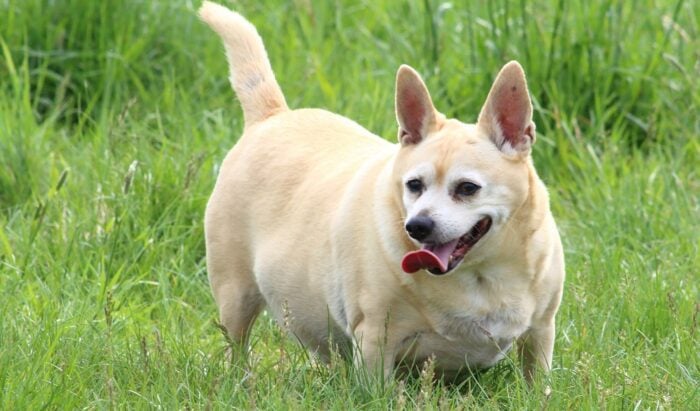Table of Contents
A small breed dog is full of life and energy. Although they typically have small physical stature, they maintain a prominent personality.
Although they share the same ancestors as large breed dogs, small breeds face a few common health problems that are vastly different from larger canines.
Learning about common health conditions of small dog breeds can help you understand your little companion and how to ensure he stays as healthy as possible.
To help get you started, here are nine common health issues associated with small-breed dogs:
12 Common Health Problems for Small Breeds
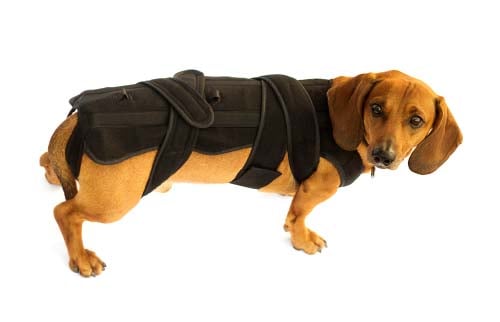
Intervertebral Disk Disease (IVDD)
This condition happens when the cushioning disks between spinal vertebrae protrude into the spinal cord.
This degenerative disease impacts mobility issues, which are also described as ruptured, bulging, slipped, or herniated disks.
Something as simple as jumping on the sofa can damage a disc weakened by IVDD, triggering acute and painful side effects.
Unfortunately, yearly exams may not detect signs of IVDD until the dog’s symptoms become evident.
IVDD can cause nerve damage, pain, or paralysis. The symptoms include sensitivity to touch, lameness, stiffness, weakness, and collapse.
Most often, this condition affects middle-aged dogs. Diagnosis includes x-rays, MRIs, and neurological exams.
Treatment ranges from medical management to surgery, depending on the severity.
Neck Intervertebral Disc Disease (Cervical IVDD)
Cervical IVDD occurs in the dog’s neck.
If you notice one of the following symptoms, it’s best to contact your vet for immediate advice.
Symptoms of this condition could be mild or very severe, including the following:
- Arching back
- Shivering or crying
- Reluctance to move
- Inability to walk normally
- Knuckling of all four paws
- Inability to stand
- Unsteadiness in all four legs
- Inability to support own weight

Back Intervertebral Disc Disease
Being one of the common health problems for small breeds, dogs with this condition have damaged discs causing issues in their back.
This condition presents in the mid to back portion of a dog’s body, ranging from mild to severe.
They may display the following symptoms:
- Tense belly
- Muscle spasms
- Inability to walk normally
- Unable to move or feel back legs
- Inability to support their weight
- Weakness in hind legs
Lower-Back Intervertebral Disc Disease
A dog suffering from lumbosacral IVDD stems from the lower back region.
The symptoms range from mild to severe, including the following:
- Limp tail
- Pain and difficulty jumping
- Dilated anus
- Urinary or fecal incontinence.
- Brachycephalic Airway Syndrome
Any dog with a flat face or short nose is considered brachycephalic.
These breeds include Frenchies, Bulldogs, Boxers, Chinese Pugs, Pekingese, Shih Tzus, Bull Mastiffs, Pugs, and Lhasa Apsos.
Occasionally, brachycephalic dogs are born with compressed airways, making it difficult for them to breathe.
Upper airway abnormalities include stenotic nares, elongated soft palate, laryngeal collapse, hypoplastic trachea, and everted laryngeal saccules.
A dog may have a combination of one or more of these abnormalities.
Unfortunately, these changes can pose physical problems for the affected dog.
Stenotic nares result in abnormally small nostrils or narrowed openings.
The narrowing restricts the amount of air flowing into the nostrils. The elongated soft palate (the roof of the mouth) is too long for the top of the mouth.
The excess length will block the entrance to the trachea at the back of the throat.
Nasopharyngeal turbinate is the ridges of bone that humidify and warm air inhaled through the nose.
Should these extend beyond the nose into the pharynx, they pose variable restrictions of airflow obstruction.
Laryngeal collapse is caused by chronic stress on the larynx by other features.
Eventually, the larynx cannot open as wide as expected, causing further restriction.
Symptoms of this condition include noisy breathing, snorting, vomiting, gagging, and fainting after exercise.
Managing this condition is often through exercise, limiting activity in humid or hot weather, or severe cases, surgery to fix the airways.
Unfortunately, being overweight can also worsen this problem.
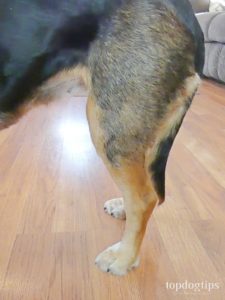
Patellar Luxation
Although the luxating patella can stem from traumatic injury, it’s most commonly associated with limb and joint structures.
This condition occurs when the kneecap moves out of normal position, occurring in one or both hind legs.
For many small-breed dogs, this movement occurs toward the inside of the limb.
When the luxation occurs, the dog may experience intermittent lameness.
It may also lock the limb at an odd angle. The dog returns to normal movement when the joint realigns as if nothing happened.
A veterinarian diagnoses the luxating patella with a physical examination.
The veterinarian will assign a grade based on the condition and discomfort you’ve seen in your pet.
Depending on the stage, treatment for the slipped kneecap can vary, from medical management to surgery.
Most low-grade options are treated with pain and anti-inflammatory medications.
Dental Disease
Dental disease is one of the most common conditions found in dogs.
Canines will rarely show signs of distress, making them difficult to detect.
Periodontal disease is the most common dental issue among all dogs.
This condition occurs when an accumulation of dental plaque and tartar on the teeth causes inflammation.
Over time, periodontitis can cause infections, bone loss, or loss of teeth.
Certain breeds are genetically predisposed to periodontal disease, primarily due to genetics, maligned bite, or the shape of a dog’s mouth.
These breeds are usually small, toy breeds or those with a pushed-in face.
One of the tell-tale signs of periodontal disease is bad breath. Other signs include:
- An inability to chew
- Broken teeth
- Bleeding gums
- Pawing at the mouth
- A mass inside the mouth
Always consult with your veterinarian if you notice any of these signs immediately.
If caught early, the damage is minimal, preventing tooth loss and other medical problems.
Any time you take your dog to the vet for a check-up, the vet should include a dental exam.
If your dog has an infection, a complete exam should be offered.
Along with a visual inspection, an x-ray may help determine the extent of the damage.
Often, tartar is visible when you look inside a dog’s mouth.
Although it’s harder to assess plaque and tartar below the gum line, getting adequate treatment is essential.
Obesity
When small breeds overeat food and treats, it can lead to rapid weight gain.
Carrying extra weight increases your dog’s chance of developing medical conditions.
Ensure your pet gets daily exercise and work with your veterinarian to establish a weight loss plan.
Some of the most significant risks for overweight pets include cancer, heart problems, respiratory disease, kidney disease, insulin resistance, and osteoarthritis.
Regular appointments with your veterinarian can help your dog stay happy and healthy, starting with their weight.
Make sure you follow the caloric intake recommendations for your dog’s size, feeding them controlled amounts.
Limit treats and other high-calorie treats, encouraging healthy weight loss over an extended period.
Whelping Issues and Complications
Due to the narrow pelvic openings and minimal endurance, birthing pups can be exceptionally difficult for little breeds.
Labor will typically progress within 4-6 hours of intermittent parturition.
Contact your vet immediately if you’ve noticed four or more hours between puppies, weak contractions without a puppy being born, or 30 minutes without a puppy.
There are occasions when a cesarean is likely the best option for your dog, especially if planning ahead of time.
Talk to your vet in advance to determine the best delivery plan for your dog.
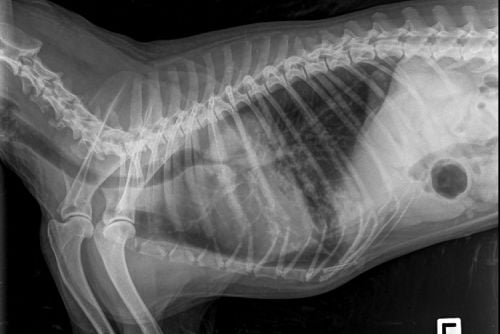
Tracheal Collapse
Small dogs are more susceptible to tracheal collapse due to weakened cartilage structures.
The trachea is the airway from the nose and mouth into the lungs.
When the system collapses, dogs experience coughing, described as a goose honk.
Other symptoms include difficulty breathing, wheezing, vomiting, gagging, or retching with a cough, coughing when you pick up the dog, or applying pressure to their neck.
Dogs with this condition will present with a non-productive cough, not accompanied by fever.
Various activities can trigger respiratory distress, including exercise, excitement, drinking water, obesity, or extreme temperatures.
Should your dog suffer from tracheal collapse, seek immediate veterinary care.
Although this condition is occasionally present at birth, it’s most frequently brought on by walking on a leash with a collar.
Using a harness instead of a collar is a decent preventative measure you can take.
Diagnosing this condition will include a chest x-ray, fluoroscopy, tracheoscopy, and other tests to rule out other conditions.
Testing may include blood tests, urinalysis, and chemistry panels. Many times, treatment involves specific medications or surgery to correct the issue.
Legg-Calve-Perthes Disease
Also known as avascular or aseptic necrosis of the femoral head, this condition impacts the head of the femur.
This condition causes the femur to spontaneously degenerate, collapsing the hip and leading to arthritis.
The exact cause of this condition is unknown, but studies suggest it may occur from disrupted blood flow.
This disruption causes the bone to weaken and deteriorate over time, leading to minor fractures.
Scar tissue eventually stabilizes the bone, but the structure leads to arthritis.
Legg-Calve-Perthes disease causes the dog to limp on the affected leg, beginning gradually and progressing over several weeks.
Eventually, the dog can no longer place any weight on the affected leg.
In some situations, pain and lameness develop suddenly. The condition typically affects one rear leg.
Diagnosis often starts with radiographs (X-rays), showing the progression of the disease over time.
Over time, the femur may take on a moth-eaten appearance as the bone resorbs.
Eventually, the bone will become deformed with serious evidence of arthritis.
Treatment for the disease depends on the condition.
For mild cases, medical therapy and pain management is enough. Eventually, the veterinarian may recommend surgery.
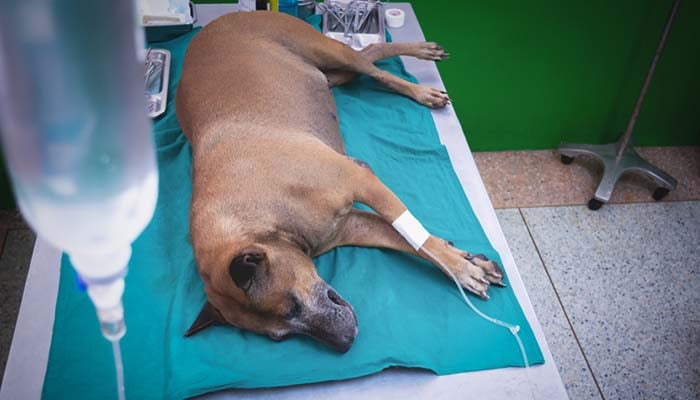
Pancreatitis
Unfortunately, pancreatitis is potentially life-threatening and may be one of the common health problems for small breeds.
This condition isn’t always apparent when first presenting with warning signs, often mistaking symptoms for something less serious.
Inflammation of the pancreas is dangerous because it is responsible for releasing enzymes that aid in digestion.
When the organ works normally, enzymes become active when they reach the small intestine.
When a dog struggles with pancreatitis, enzymes activate when released, causing damage to the pancreas and surrounding tissue.
Standard signs of pancreatitis in dogs include repeated vomiting, diarrhea, dehydration, fever, weakness, or pain in the abdomen.
Should your dog exhibit any of these signs, monitor her closely.
If the animal displays multiple symptoms at once, call the veterinarian promptly.
There are several causes of pancreatitis in dogs.
These may include general risk factors that bring on pancreatitis, although attacks may appear suddenly without reason.
Known risk factors for the condition include obesity, blunt trauma, diabetes, medications or toxins, genetic dispositions, and human food.
A vet will diagnose pancreatitis in dogs using the dog’s medical history.
Blood tests to measure enzymes and a physical examination can also help with a diagnosis.
In a few cases, radiographs and ultrasound rule out other causes. No singular test should determine a diagnosis.
All clinical findings should determine the most appropriate diagnosis.
Hypoglycemia
Holding low blood sugar is a common problem with small-breed puppies.
Typically, young animals don’t have energy stores to maintain adequate blood glucose (BG) in times of stress or fasting.
A small breed dog is more likely to suffer from hypoglycemia, which can lead to decreased food intake.
Clinical presentation of hypoglycemia includes lethargy, poor appetite, weakness, twitching, seizures, and coma. Left untreated, hypoglycemia is fatal.
Should an owner suspect their puppy is struggling with blood sugar, a small amount of Karo syrup on the gums can help.
Treatment includes IV dextrose boluses, warming the body, IV fluids, and complete bloodwork.
When caught early, the hypoglycemic prognosis is good. It’s critical to remember that a hypoglycemic puppy is an emergency.
Ensure the pet consumes frequent meals and stays warm to limit the probability overall.
Common Health Problems for Small Breeds: Conclusion
Although small breeds may come across as easier due to their size, each breed holds specific risks and problems that can occur.
If your dog has health issues, it’s always better to have a veterinarian assess it before symptoms progress.
Regular vet visits can limit the likelihood of any condition progressing to an unmanageable state.
You’ll help your dog live the healthiest life possible by remaining educated. That includes knowing the common health problems for small breeds and how to manage or prevent them.



